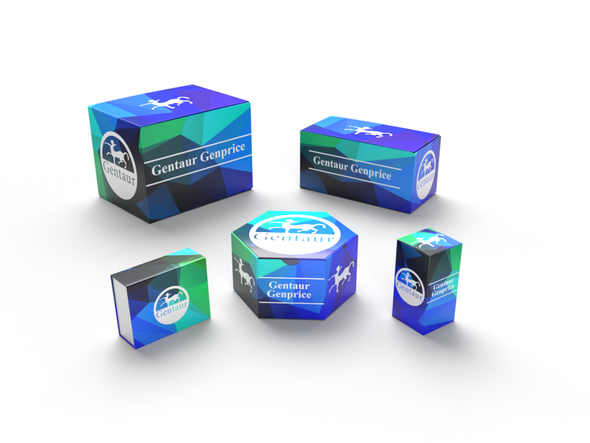Description
CCDC22 Antibody | 6933 | Gentaur UK, US & Europe Distribution
Host: Rabbit
Reactivity: Human, Mouse, Rat
Homology: Predicted species reactivity based on immunogen sequence: Bovine: (100%)
Immunogen: CCDC22 antibody was raised against an 18 amino acid synthetic peptide near the amino terminus of human CCDC22.
The immunogen is located within amino acids 530 - 580 of CCDC22.
Research Area: Neuroscience
Tested Application: E, WB, IF
Application: CCDC22 antibody can be used for detection of CCDC22 by Western blot at 1 - 2 μg/mL. For immunofluorescence start at 20 μg/mL.
Antibody validated: Western Blot in human samples and Immunofluorescence in human samples. All other applications and species not yet tested.
Specificiy: At least three isoforms of CCDC22 are known to exist; this antibody will detect the two largest isoforms.
Positive Control 1: Cat. No. 1210 - HEK293 Cell Lysate
Positive Control 2: Cat. No. 10-301 - Human Brain Tissue Slide
Positive Control 3: N/A
Positive Control 4: N/A
Positive Control 5: N/A
Positive Control 6: N/A
Molecular Weight: N/A
Validation: N/A
Isoform: N/A
Purification: CCDC22 Antibody is affinity chromatography purified via peptide column.
Clonality: Polyclonal
Clone: N/A
Isotype: IgG
Conjugate: Unconjugated
Physical State: Liquid
Buffer: CCDC22 Antibody is supplied in PBS containing 0.02% sodium azide.
Concentration: 1 mg/mL
Storage Condition: CCDC22 antibody can be stored at 4˚C for three months and -20˚C, stable for up to one year. As with all antibodies care should be taken to avoid repeated freeze thaw cycles. Antibodies should not be exposed to prolonged high temperatures.
Alternate Name: CCDC22 Antibody: JM1, CXorf37, JM1, Coiled-coil domain-containing protein 22
User Note: Optimal dilutions for each application to be determined by the researcher.
BACKGROUND: CCDC22 Antibody: CCDC22 is a recently identified coiled-coil domain-containing protein that has been shown to bind copines, which are calcium-dependent, membrane-binding proteins that may function in calcium signaling. In rat, CCDC22 has been observed to localize in multiple regions of the brain, including the prefrontal and somatosensory cortex, dentate gyrus and thalamus, and in the ipsilateral motor neurons of the spinal cord after sciatic nerve transection suggesting that it may play a role in neuronal injury response. The human CCDC22 gene has been identified as a novel candidate gene for syndromic X-linked intellectual disability (XLID) .






